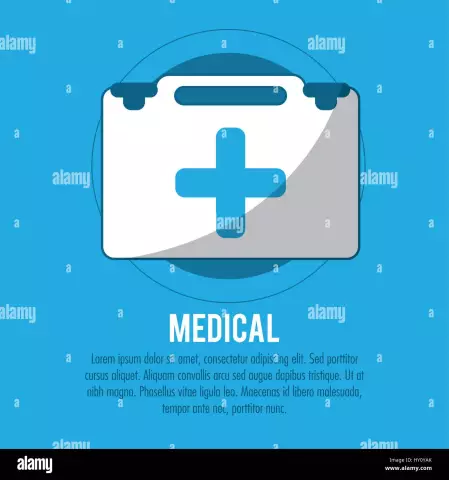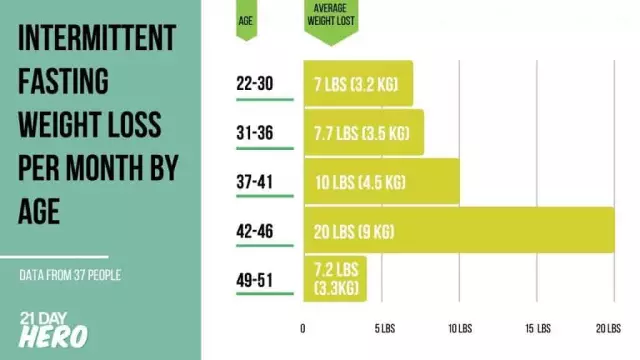- Author Rachel Wainwright [email protected].
- Public 2023-12-15 07:39.
- Last modified 2025-11-02 20:14.
First-aid medical care: the benefits and harms of good intentions
Each of us from time to time is faced with the fact that other people need immediate help. Everyone reacts to this in different ways: some immediately call doctors and the police, others rush to the victims and try to save them on their own. Some even pass by … Of course, the desire to help a neighbor in trouble is quite natural for any decent person. However, not everyone understands that it is impossible to act in such a situation with good intentions, but without knowledge. It is necessary to provide urgent first aid assistance competently so as not to harm the victims.

Source: depositphotos.com
Common mistakes made by inexperienced "rescuers"
Most Russians are convinced that in order to save a person in trouble on their own, a desire to help and a certain amount of determination are quite enough. This misconception can be costly for the victim, since the “rescuer” who is too active and completely inexperienced in such matters will easily lead him to the brink of survival. The workers of the emergency medicine departments are well aware of the main mistakes in the provision of urgent first aid.
- Unnecessary movement of the victim. The desire to put a wounded or sick person to bed as conveniently as possible is quite natural, but this is not always acceptable. If the victim has serious injuries (for example, after falling from a height or after an accident), any movement can aggravate his condition and lead to serious consequences. It is not for nothing that professional rescuers, as a rule, first disassemble the rubble or the body of a crashed car and only then carefully transfer the wounded. You can not budge and a person who became ill on the street if there is a suspicion of a heart attack or stroke.
- Incorrect application of the tourniquet. Errors can be very diverse - from using objects that injure the skin (for example, wire) as a tourniquet and applying them to the naked body to attempts to clamp the vessels below the bleeding site. Situations are especially dangerous when the tourniquet is applied for too long or they forget to notify doctors about the time of its application: this is fraught with tissue necrosis and even loss of a limb. The safe installation time for the harness is considered to be one hour in winter and one and a half to two hours in summer. At the time of application, it is necessary to attach a note with the exact time indication to the bandage or clothing. It is recommended to apply a tourniquet only in case of obvious arterial bleeding. If you are not sure if you can do everything correctly, it is better to apply a pressure bandage, close the wound with a dense tissue swab, or simply press the bleeding site with your fingers.
- Inexperienced tire fitting. Many believe that a broken limb must be straightened before being attached to a splint. This delusion causes a lot of unnecessary trouble for doctors and torment for their patients. When forcibly straightening a broken leg or arm, bone fragments are most often not aligned correctly. Correct application of the splint involves fixing the limb in a bent, comfortable position for the victim.
- Extraction of large objects from wounds. Such actions are only possible in the operating room. An attempt to remove a knife or large piece of glass from a wound right on the scene can lead to severe blood loss and even death of the victim.
- Strikes on the back of a choked person. In this case, "help" is either completely useless, or makes the stuck piece of food penetrate even further into the respiratory tract. In such a situation, the rescuer should grab the victim from behind and make sharp presses with both hands on the solar plexus area.
- Tilting the head back to stop nosebleeds. This position not only does not help, but also promotes blood flow into the respiratory tract. If a person has nosebleeds, they should keep their head tilted forward.
- Lubrication of burns with fat. Heat-damaged fabrics need immediate cooling. It is best to place the affected area of the body under cold running water for at least 20 minutes or apply ice wrapped in a clean cloth. Greasing causes the tissues to continue to overheat and deteriorate. A similar effect is produced by attempts to rub off frostbitten limbs with snow, while they must be thawed in warm water.
- "Disinfection" of open wounds with tincture of iodine, brilliant green or other alcohol-containing liquids - it leads to burns of injured tissues and complicates their healing.
- Placing solid objects in the mouth of the epileptic at the time of the attack. This is due to the fear that the patient will bite his tongue due to the seizure. In fact, such an event is unlikely, which cannot be said about damage by hard objects or their fragments to the soft tissues of the oral cavity, larynx, bronchi and esophagus, teeth. To protect the epileptic from injury during a seizure, it is enough to hold his limbs and head, and at the end of the seizure, turn the patient on his side.
- Reduction of dislocations. To distinguish such an injury from any other (fracture or contusion), you need to have professional experience and diagnostic equipment. And the procedure itself must be performed by a person who has done this repeatedly.
- Unjustified use of drugs. It is very dangerous to give the victim any medications, based only on the external signs of the disease. The appointment of drug therapy should be preceded by a diagnosis. Actions such as using alcohol as a pain reliever or warming agent are also completely unacceptable.
- Provoking vomiting in case of poisoning with unknown substances. If a caustic liquid (acid or alkali) has entered the victim's stomach, an attempt to remove them with vomiting will result in additional burns to the esophagus and oral cavity. For other poisonings, vomiting can be induced. To do this, offer the patient to drink a few glasses of warm water and press with two fingers on the root of the tongue.
- Inept carrying out of cardio-respiratory measures. Doing artificial respiration with only a vague understanding of it is quite dangerous. Moreover, it is not worthwhile, without experience, to apply methods such as a blow to the sternum in order to restore the heartbeat.

Source: depositphotos.com
Competent and responsible provision of first aid
All schoolchildren of our country attend OBZh lessons, but there are no special results of these lessons. The point here is not only that the knowledge gained is purely theoretical. It is no less important that our fellow citizens, as a rule, do not have a clear idea of what is absolutely necessary and what should in no case be done when faced with the need to help another person.
In many countries, the duty of every citizen to rescue victims is enshrined in law. For example, in France, Japan and Israel, a passer-by who does not call an ambulance in time may be subject to criminal prosecution. In Germany, the ability to competently provide first aid is an indispensable condition for obtaining a driver's license. At the same time, a citizen who conscientiously tried to save a person is released from responsibility, even if his actions caused harm. A similar provision is one of the main tenets of the "Law of the Good Samaritan" in force in the United States. In Russia, such a legal framework does not exist, but you should still have some idea of what to do in a critical situation.
So, if you have a need to provide first aid to someone, you should:
- Arrange a call for rescue service specialists and doctors.
- Find out if there are any doctors around, and call them for help.
- Assess your own knowledge and skills and relate them to the real danger to the victim's life. This means, for example, that it is worth trying to carry out cardio-respiratory measures in the absence of experience only if the victim is not breathing, his pulse cannot be felt, etc.
- Try to eliminate the factors that worsen a person's condition, without moving him from the place. The victim can only be carried in a very dangerous situation, for example, if he is in a car that is on fire.
- Stop arterial bleeding, if possible without using a tourniquet. When applying a tourniquet, securely fasten a note indicating the time (it is allowed to write this directly on the skin).
- Cover open wounds with bandages to avoid contamination.
- It is convenient to fix broken limbs.
- Talk to the victim before the arrival of doctors, try to calm him down.

Source: depositphotos.com
Helping a person in a difficult situation, you should not forget about your safety. In a critical situation, it is important not only to save the victim, but also to soberly assess the circumstances so as not to endanger your own life.
Providing first aid is the duty of every citizen, but it must be done competently, judiciously assessing their capabilities and moral responsibility for the consequences. In this sense, not only theoretical familiarization with the rules of behavior in emergency situations is very useful, but also attending several practical sessions (for example, on the basis of civil defense and emergency situations) to acquire the necessary skills.
YouTube video related to the article:

Maria Kulkes Medical journalist About the author
Education: First Moscow State Medical University named after I. M. Sechenov, specialty "General Medicine".
Found a mistake in the text? Select it and press Ctrl + Enter.






